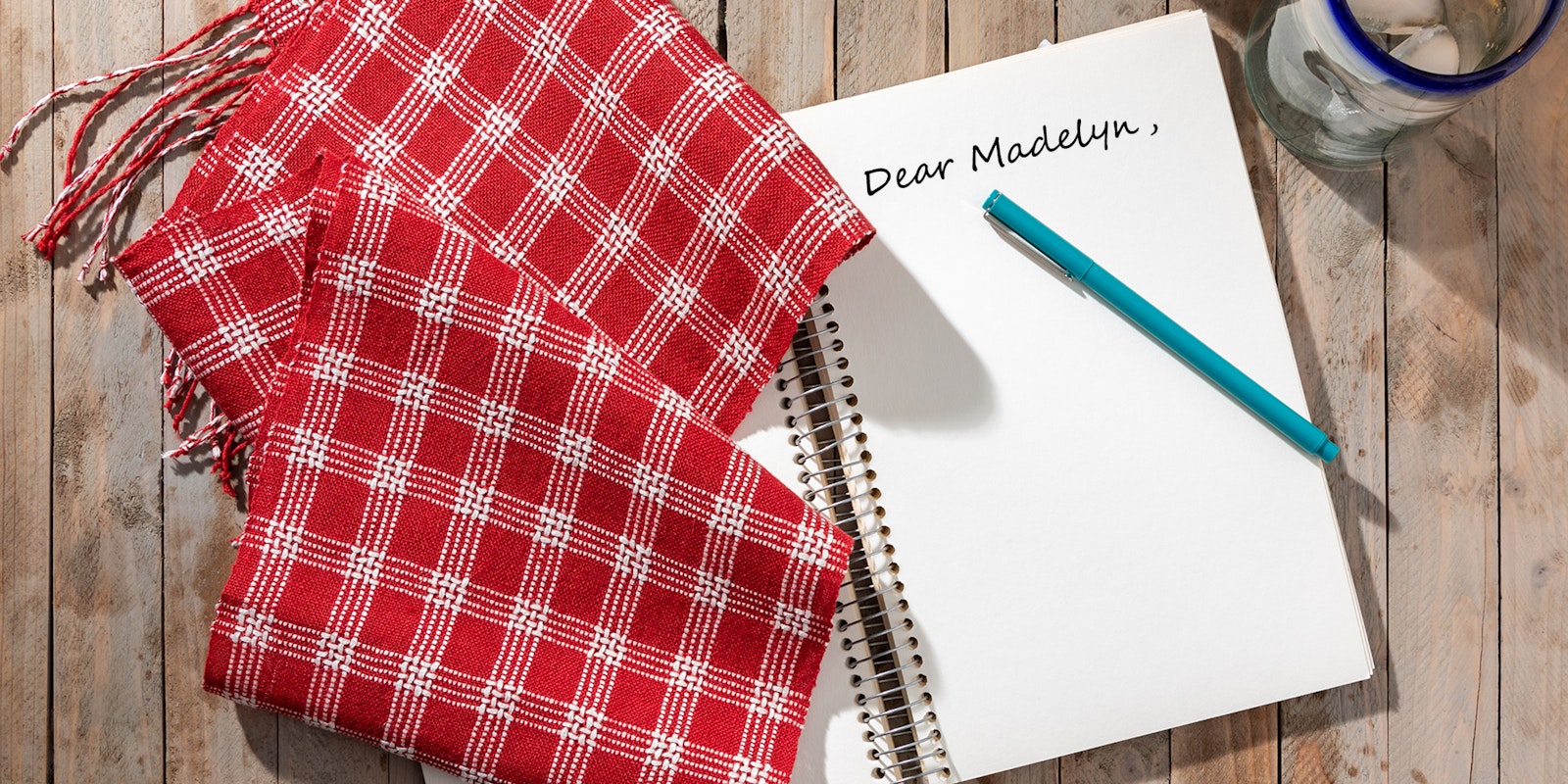I am wondering if I just made a poor choice of warp yarn, or if there is anything I can do to stop warp threads from breaking in my current project. I have woven this scarf before several times and have never had a problem, but this time I am using tussah silk for the warp and tabby weft and a hand-dyed silk for the pattern weft. I have had five broken warp threads in the last inch, and I wonder if I should just give up, or if there is something I am doing wrong. I’d sure appreciate any suggestions. – Alice
Hi Alice!
When you are experiencing more than the occasional broken warp thread, first look at where the warp threads are breaking. Usually, you can then use strategies to prevent or minimize breakage.
- Warp threads break at the selvedges: If the breakage occurs at the selvedges, the usual culprit is draw-in. Be very careful to turn the weft around the edge thread smoothly and firmly (to avoid a weft loop at the edge), but leave enough weft slack (a 30 degree angle usually works well) to allow the weft’s over and under path without pulling in on the edges. As the reed hits the fell, if the edge threads are crowded and pulled in there, the reed’s teeth can act like knives against those threads.
- Warp threads break behind the reed: Singles yarns, which your tussah might be, or delicate or loosely spun yarns are subject to fraying. A prime area for fraying to occur is at the heddles: as the shafts go up and down, the heddles (string/polyester heddles even more so than stainless steel heddles), rub against and fray the yarn. To avoid this, advance the warp very very frequently, maybe after every 5 picks or fewer. The goal is to spread out the contact between the heddle and each thread as much as possible.
- Warp threads break at the reed or between the reed and the fell: The reed can also fray warp threads as they rub against it. Frequent advancing of the warp will minimize this as well as any fraying at the heddles. It can also help minimize fraying to sley a reed with fewer dents per inch to achieve the desired sett. An 8-dent reed sleyed at 3 ends per dent can be substituted for a 12-dent reed sleyed at 2 ends per dent for 24 ends per inch, for example.
- Warp threads break randomly: It could be that the warp yarn is too loosely or irregularly spun to endure even the gentlest treatment during weaving. Try weaving with relatively loose tension and pull the reed to the fell and press instead of “beating.” Do this (“beating”) only once for each pick. Minimize in every way you can any friction and save this yarn for weft in the future.
—Madelyn
If you have a weaving question we would love to hear from you! Please email Madelyn!
Posted December 12, 2016. Updated May 8, 2017.

